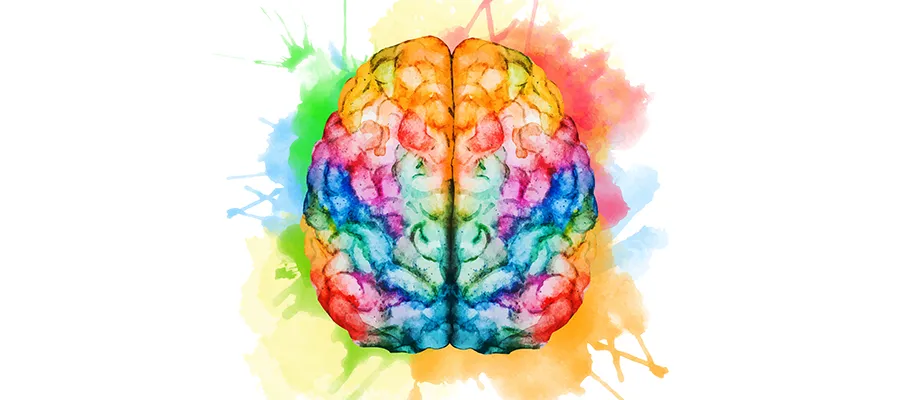
Graphic by Anastasia Zenina, Shutterstock.
Stanford Medicine Scope - June 15th, 2016 - by Bruce Goldman
Training that boosts your creativity apparently works, in part, by helping you to lighten up.
Can creativity even be trained? To answer that question objectively, you first have to be able to measure creativity in some reliable way.
Creativity, though, is one of the most difficult human attributes to measure. It thrives in an atmosphere of spontaneity and freedom, and manifests itself differently each time. For measurements to be reliable, they must also be reproducible.
But a new study published in Cerebral Cortex suggested that at least a particular variation on creative thinking — spontaneous improvisation — not only can be improved by training, but also appears to correspond to a particular state of brain activity characterized by — are you ready? — the suppression of the very brain centers seemingly built by evolution to keep us on task.
I wrote a news release just over a year ago about a related study, in which a clever experimental approach to brain imaging allowed Stanford neuroscientist Allan Reiss, MD, and his team to show that creative performance in a task requiring spontaneous improvisation is tied to inhibition of activity in the brain’s executive-control centers — the parts of the brain that enable you to plan, organize and manage your affairs.
Tying creativity to activity, or lack thereof, in particular brain structures in a living, thinking human brain requires ingenuity. Rising to the task, Manish Saggar, PhD, then a postdoc in the Reiss group and now an instructor in Stanford’s Department of Psychiatry and Behavioral Sciences, designed an experimental protocol based on the game Pictionary, wherein players draw words while teammates try to guess what word they’re drawing. In the experiments leading to the study I wrote about last year as well as the new Cerebral Cortex paper, experimental subjects were wheeled into an MRI scanner and asked to draw either “action” words (such as “vote,” “levitate,” “snore” and “salute”) or, as a control, a simple zigzag line. The latter chore taxed the fine-movement and attentional-focus areas of the brain but didn’t require much creativity. Expert raters scored the resulting drawings for creativity, accuracy and other parameters.
Bottom line: Creative solutions came faster and more furiously when the “smart centers” that handle the brain’s executive and managerial functions kept their mouths shut.
In the new study, experimental subjects were randomized to one of two groups. One group were given a five-week course in “creative-capacity building,” designed by entrepreneur, artist, author and educator Grace Hawthorne, MFA, MBA, of Stanford’s Hasso Plattner Institute of Design. The other group got a five-week language-capacity building course. All the subjects underwent brain imaging during the Pictionary-knockoff protocol both before and after taking the five-week course.
And the results? First, those who took the creativity-training course performed more creatively at the spontaneous-improvisation game than those who took the language-training course. And, second, improved creativity — as judged by the experts’ assessment of the pictures subjects drew in the MRI chamber — went hand in hand with more suppression in key brain centers whose day job is to keep us focused on our day jobs.
That rings true for me. I’ve always suspected that my best ideas come with my feet up on the desk, my hands clasped behind my back, and my boss off at a meeting somewhere — or, say, while I’m deep into making goofy faces in the mirror.

